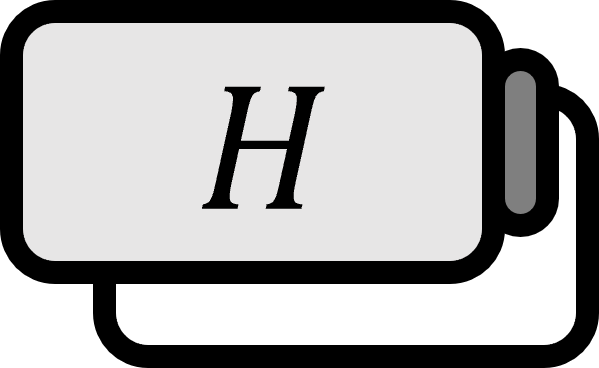Hilbert Space Bessel Sequences
Definition1
A sequence $\left\{ \mathbf{v}_{k} \right\}_{k \in \mathbb{N}} \subset H$ in a Hilbert space $H$ is called a Bessel sequence and $B$ is called the Bessel bound if there exists $B > 0$ that satisfies the following
$$ \sum_{k=1}^{\infty} \left| \left\langle \mathbf{v} , \mathbf{v}_{k} \right\rangle \right|^{2 } \le B \left\| \mathbf{v} \right\|^{2}, \quad \forall \mathbf{v} \in H $$
Explanation
Intuitively, a Bessel sequence can be seen as a sequence that curves so that the coefficients of an infinite-dimensional vector $\mathbf{v}$ get smaller as one goes further. As is the case with most of mathematics, something that is unbounded is difficult to study, but just the existence of the Bessel sequence allows us to be free from various dangerous leaps in logic. Of course, a simple equivalence condition for identifying such existence is known.
Theorem
Given a sequence $\left\{ \mathbf{v}_{k} \right\}_{k \in \mathbb{N}} \subset H$ and $B > 0$ in a Hilbert space $H$, the following two conditions are equivalent.
$\left\{ \mathbf{v}_{k} \right\}_{k \in \mathbb{N}}$ is a Bessel sequence with Bessel bound $B$.
The operator $T$ defined as follows is linear and bounded while satisfying $\left\| T \right\| \le \sqrt{B}$.
$$ T : l^{2} \to H \\ T \left\{ c_{k} \right\}_{k \in \mathbb{N}} := \sum_{k \in \mathbb{N}} c_{k} \mathbf{v}_{k} $$
Proof
$(\implies)$
Let $\left\{ \mathbf{v}_{k} \right\}_{k \in \mathbb{N}}$ be a Bessel sequence with Bessel bound $B$ and $\left\{ c_{k} \right\}_{k \in \mathbb{N}} \in l^{2}$. To show $T \left\{ c_{k} \right\}_{k \in \mathbb{N}} = \sum_{k \in \mathbb{N}} c_{k} \mathbf{v}_{k}$ is well-defined by being convergent, let’s consider two natural numbers $n > m$
$$ \left\| \sum_{k =1}^{n} c_{k} \mathbf{v}_{k} - \sum_{k =1}^{m} c_{k} \mathbf{v}_{k} \right\| = \left\| \sum_{k = m + 1}^{n} c_{k} \mathbf{v}_{k} \right\| = \sup_{\left\| \mathbf{w} \right\| = 1 } \left| \sum_{k = m + 1}^{n} \left\langle c_{k} \mathbf{v}_{k} , \mathbf{w} \right\rangle \right| $$
By the triangle inequality,
$$ \sup_{\left\| \mathbf{w} \right\| = 1 } \left| \sum_{k = m + 1}^{n} \left\langle c_{k} \mathbf{v}_{k} , \mathbf{w} \right\rangle \right| \le \sup_{\left\| \mathbf{w} \right\| = 1 } \sum_{k = m + 1}^{n} \left| \left\langle c_{k} \mathbf{v}_{k} , \mathbf{w} \right\rangle \right| $$
By the Cauchy-Schwarz inequality,
$$ \begin{align*} & \sup_{\left\| \mathbf{w} \right\| = 1 } \sum_{k = m + 1}^{n} \left| \left\langle c_{k} \mathbf{v}_{k} , \mathbf{w} \right\rangle \right| \\ \le & \left( \sum_{k = m + 1}^{n} \left| c_{k} \right|^{2} \right)^{1/2} \sup_{\left\| \mathbf{w} \right\| = 1 } \left( \sum_{k = m + 1}^{n} \left| \left\langle \mathbf{v}_{k} , \mathbf{w} \right\rangle \right|^{2} \right)^{1/2} \\ \le & \left( \sum_{k = m + 1}^{n} \left| c_{k} \right|^{2} \right)^{1/2} \sqrt{B} \end{align*} $$
Since $\left\{ c_{k} \right\}_{k \in \mathbb{N}} \in l^{2}$ is a Cauchy sequence, $\displaystyle \left\{ \sum_{k=1}^{n} c_{k} \mathbf{v} \right\}_{n=1}^{\infty} \subset H$ is also a Cauchy sequence, and thus $T$ is well-defined. $T$ is linear by its definition,
$$ \begin{align*} \left\| T \left\{ c_{K} \right\}_{k \in \mathbb{N}} \right\| =& \sup_{\left\| \mathbf{w} \right\| = 1 } \left| \left\langle T \left\{ c_{k} \right\}_{k \in \mathbb{N}} , \mathbf{w} \right\rangle \right| \\ \le & \sqrt{B} \left( \sum_{k \in \mathbb{N}} \left| c_{k} \right|^{2} \right)^{1/2} \\ =& \sqrt{B} \left\| \left\{ c_{k \in \mathbb{N}} \right\} \right\|_{2} \end{align*} $$
Therefore, dividing both sides by $\left\| \left\{ c_{k \in \mathbb{N}} \right\} \right\|_{2}$ gives $\left\| T \right\| \le \sqrt{B}$.
$(\impliedby)$
Let $\left\{ \mathbf{v}_k \right\}_{k \in \mathbb{N}}$ be a sequence defined in a Hilbert space $H$. Suppose a bounded linear operator $T : l^{2} \to H$ is defined as follows.
$$ T \left\{ c_{k} \right\}_{k \in \mathbb{N}} := \sum_{k=1}^{\infty} c_{k} \mathbf{v}_{k} $$
Then, the adjoint operator of $T$ $T^{ \ast } : H \to l^{2}$ is represented as follows.
$$ T^{ \ast } \mathbf{v} = \left\{ \left\langle \mathbf{v} , \mathbf{v}_{k} \right\rangle_{H} \right\}_{k \in \mathbb{N}} $$
Moreover, for all $\mathbf{v} \in H$,
$$ \sum_{k=1}^{\infty} \left| \left\langle \mathbf{v} , \mathbf{v}_{k} \right\rangle_{H} \right|^{2} \le \left\| T \right\|^{2} \left\| \mathbf{v} \right\|_{H}^{2} $$
Since $T$ is defined to satisfy $\left\| T \right\| \le \sqrt{B}$,
$$ \sum_{k=1}^{\infty} \left| \left\langle \mathbf{v} , \mathbf{v}_{k} \right\rangle \right|^{2} \le \left\| T \right\|^{2} \left\| \mathbf{v} \right\|^{2} \le B \left\| \mathbf{v} \right\|^{2} $$
Therefore, $\left\{ \mathbf{v}_k \right\}_{k \in \mathbb{N}}$ becomes a Bessel sequence with Bessel bound $B$.
■
Ole Christensen, Functions, Spaces, and Expansions: Mathematical Tools in Physics and Engineering (2010), p75-76 ↩︎
